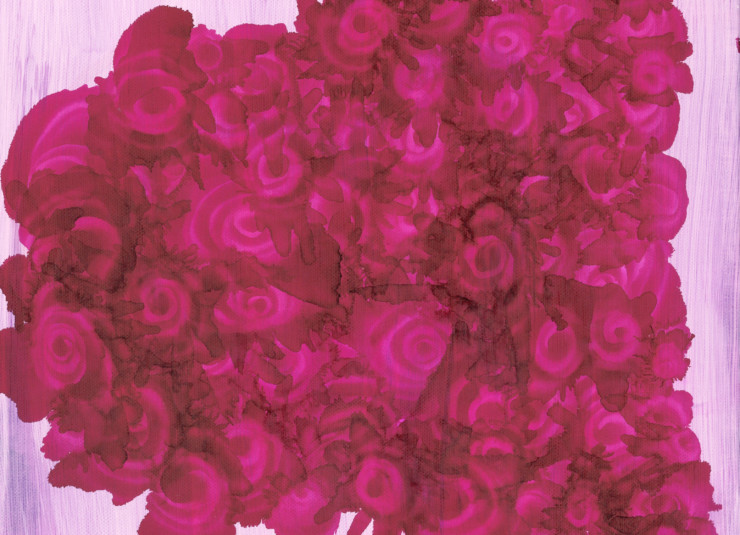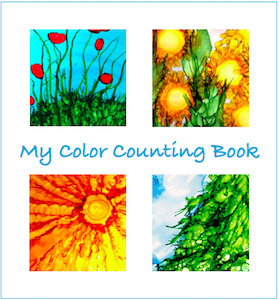There are over ten million colors in the world, and that’s just the ones we can see. We tend to learn about the basics, but why limit ourselves? Colors have cool histories, intriguing origins, cultural meanings, wonderful names. Plus, they are often quite beautiful. And beauty is showing promise as a way to help kids (and us!) learn.
With all this rich possibility swirling in the world, we invite you to take a journey into colors—whether you are 5 or 50 or even 85. Use them to teach yourself fascinating things about history, science, language, and culture (maybe even math!). Go on color treasure hunts, taste them or tinker with them. We’re here to send you on your colorful way, continuing our color journey with Fuchsia.
Of course, in our very own alphabet book, we also include old favorites like red, orange, yellow, green, blue (as part of the denim page) and purple. But with 26 letters to illustrate, we also saw a beautiful opportunity: to paint the world from an azure sky to a zaffre goodbye.
How to Pronounce Fuchsia
5 Fun Facts About Fuchsia
1. Fuchsia is a family of plants that have decorative flowers in a sort of “teardrop shape that are usually bright red and purple. The plants were discovered in the 1600s in the Caribbean and named for the German botanist (a scientist who studies plants) Leonhart Fuchs.
2. The color fuchsia was first used in the 1800s as a dye called fuchsine. It was renamed not long after to magenta, in honor of the French army’s victory in the Battle of Magenta. (Now, fuchsia and magenta are two different colors, with magenta being lighter pink, and fuchsia being darker.)
3. Crayola introduced the color hot magenta in 1972, the closest Crayola’s crayons come to true fuchsia color.
4. In Pokémon games, players might visit Fuchsia City, in the south of Kanto, which “houses many flowerbeds and small lakes.”
5. In color psychology, fuchsia (or magenta) is believed to “create harmony and balance in every aspect of life.”
Take a Color Walk
One great way to become more attuned to the colors around you is to take a color walk. It’s easy to do: simply decide on your color-of-the-day, and look for it wherever you roam. Take pictures, jot notes, or just keep your findings in mind. If you feel so inspired write a color vignette when you get home.
Count Your Colors
For younger color walk participants, we’ve created a special My Color Counting Book that reinforces color names, days of the week, sorting, counting, and adding. Just print and enjoy, at home or for a math or literacy center in the classroom!
Fuchsia Haiku Poetry Prompt
Try your hand at a Fuchsia haiku. Use the “fun facts” or findings from your color walk as inspiration if you like. Need more inspiration? Check out our haiku infographic.
Brilliant ink-on-tile illustrations created with a secret process bring the alphabet to colorful life. Children will delight in the rich, poetic language of colors like emerald, jasmine, and quartz—while also meeting old favorites like yellow, orange and purple.
Related Article at Huffington Post: 5 Great Reasons to Color the Core of Kids’ Learning
- Free E-Book + Poetry Prompt! - April 14, 2025
- Braving the Poem: Interview with Catherine Abbey Hodges - March 24, 2025
- National Poetry Month Is Here + Prompt! - March 14, 2025



Megan Willome says
The flower girl at my wedding wore fuchsia. That color was a lot more common 25 years ago.
Donna Falcone says
How beautiful she must have been! I love fuchsia (but I don’t love trying to spell it)! 😀
Donna Falcone says
Oh, that video is so beautiful, and I’m really loving the fact sheets! Great additions for using the book!
Sharon A Gibbs says
Okay, a fuchsia haiku is incubating. Maybe (I hope) it will hatch later today!
Sharon A Gibbs says
Here’s one haiku:
two plump fuchsia lips
kiss unsuspecting fellows,
slowing street traffic
And here’s another:
flashes of fuchsia
bleed domineering colors,
tremble in the wind